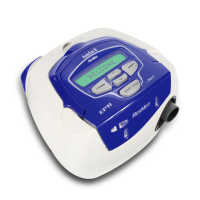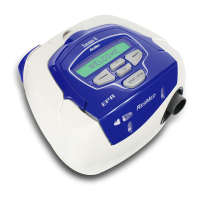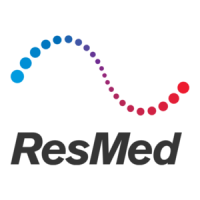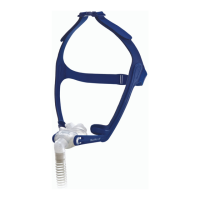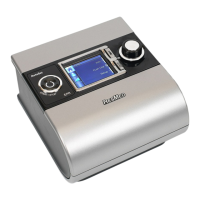5
MEDICAL INFORMATION
ENGLISH
• Oxygen supports combustion. Oxygen should not be used while you are
smoking or in the presence of an open flame.
• Always ensure airflow is being generated by the device before the oxygen
supply is turned on.
• Always turn the oxygen supply off before stopping the airflow from the device.
Note: At a fixed rate of supplemental oxygen flow, the inhaled oxygen concentration will
vary, depending on where the oxygen is introduced, the pressure settings, patient breathing
pattern, mask selection, and leak rate.
• Do not use the S8 COMPACT if there are obvious external defects or unexplained
changes in performance.
• Do not open the S8 COMPACT case. There are no user serviceable parts inside.
Repairs and internal servicing should only be performed by an authorized service
agent.
Note: The plate on the back of the device is a non removable cover. Removal of this cover
voids warranty.
• Explosion hazard—do not use in the vicinity of flammable anesthetics.
CAUTIONS
• At low pressures, the flow through the exhalation ports of your mask may not
clear all exhaled gas from the tubing. Some rebreathing may occur.
• The airflow for breathing produced by this device can be as much as 11
o
F (6
o
C)
higher than the temperature of the room. Caution should be exercised if the room
temperature is warmer than 90
o
F (32
o
C).
Note: The above are general warnings and cautions. Specific warnings, cautions, and
notes appear with the relevant instructions in the manual.
ADVERSE EFFECTS
Patients should report unusual chest pain, severe headache, or increased
breathlessness to their prescribing physician. An acute upper respiratory tract infection
may require temporary discontinuation of treatment.
The following side effects may arise during the course of therapy with the CPAP
device:
• drying of the nose, mouth, or throat
• nosebleed
• bloating
• ear or sinus discomfort
• eye irritation
• skin rashes
• chest discomfort.
338249r1.book Page 5 Friday, June 10, 2005 3:22 PM

